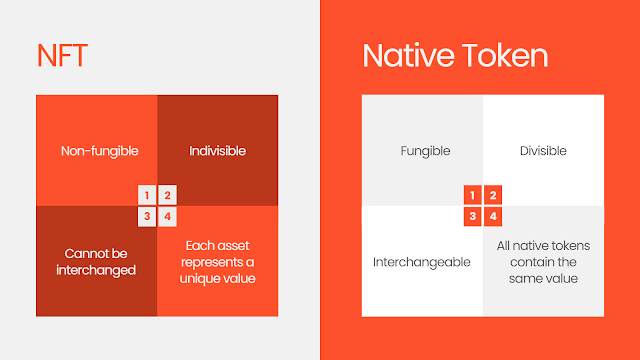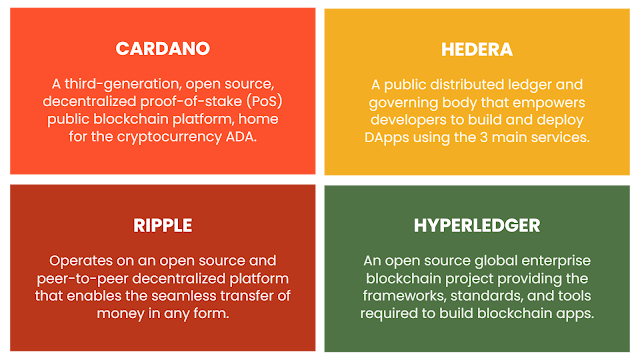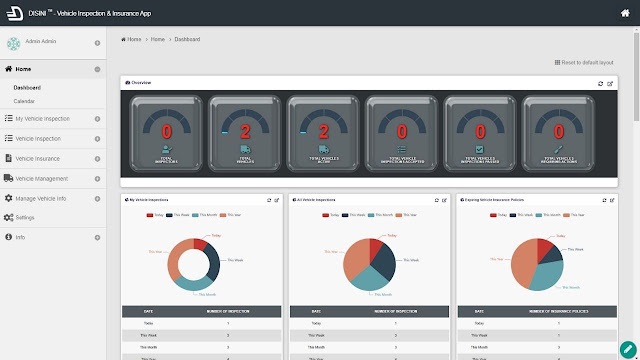What Everybody Ought to Know About Distributed Ledger Technology and Blockchain When Combined With No-Code
Introduction to Distributed Ledger Technology and Blockchain
Distributed Ledger Technology (DLT) and blockchain are disruptive technologies that provide secure and decentralized information exchange. However, not many have yet to fully understand and fathom what blockchain is, where it will be in the next decade, and why their transactions are more secure than their predecessors. Today in this whitepaper, we will cover everything you need to know about DLT and blockchain technology, along with the underlying potential that this new wave is bringing to enterprises.
Distributed Ledger Technology (DLT) and blockchain are disruptive technologies that provide secure and decentralized information exchange. However, not many have yet to fully understand and fathom what blockchain is, where it will be in the next decade, and why their transactions are more secure than their predecessors. Today in this whitepaper, we will cover everything you need to know about DLT and blockchain technology, along with the underlying potential that this new wave is bringing to enterprises.
When it comes to Distributed Ledger Technology, abbreviated as DLT, and the rising star blockchain technology, we need to focus on two words — decentralized and immutable. Decentralization means that all data is stored on the network in a distributed manner and stored on millions of computers simultaneously so that we don’t have to rely on a central authority to make decisions. Immutable, on the other hand, refers to the fact that a blockchain ledger cannot be modified and is therefore impossible to fraudulently manipulate or tamper with.
What is Distributed Ledger Technology (DLT)?
DLT is defined as a decentralized distributed ledger containing all asset transactions being recorded in multiple locations at the same time, managed by various parties, which contributes to greater transparency and prevents data manipulation. A ledger is essentially a record of data that you want to store and share, where the data is encrypted for security, making it tamper-proof. Because of the way the data is distributed, unauthorized access to data is greatly reduced, making this a significant improvement to how financial institutions used to manage critical data.
What is Blockchain?
Blockchain is an example of a Distributed Ledger Technology. It is a shared, decentralized and immutable public digital ledger that facilitates the recording of transactions that are distributed across a peer-to-peer network. Each transaction is authorized by the digital signature of the owner which helps to authenticate the transaction and protect it from tampering. A blockchain collects and stores information together in groups which are known as blocks. When a block is filled, it is closed and connected to the previous filled block via cryptography to create a chain of data known as a blockchain. Each block has a finite storage capacity and can hold a set of information. Being a DLT, information recorded and stored on blockchain cannot be edited, altered or deleted, in which it remains immutable due to its distributed nature.
Differences Between NFTs and Native Tokens
NFT, which stands for non-fungible token, represents a digital and physical asset stored in a blockchain with a unique metadata that sets it apart from one another. NFT are generally indivisible, and the digital assets represented are traceable, verifiable, and validatable thanks to its unique metadata, with the owner staying anonymous. These digital assets can be in any form of item such as music, digital artworks, photos, videos, in-game items, real estates, and many more, where each asset represents a unique value on the blockchain — If you own an NFT, you are the sole owner of that asset, which has a unique value.
Unlike NFT, a native token is fungible, interchangeable, non-unique, divisible and all of them contain the same exact value. Most notable example of fungibility is fiat, a government-issued currency that is not backed by any physical commodities. For example, $100 in your bank account is equivalent to $100 in your friend's wallet. The value will never change, regardless of which notes are used. If you were to divide a $100 bill into smaller portions, like two $50 bills, the total value after addition would still be $100.
What are Crypto Coins, Crypto Tokens, and Gas Fees?
The clear distinction between crypto coins and crypto tokens is that, coins are the native assets of a blockchain like Cardano or Hedera, in which ADA being the native asset of Cardano and HBAR for Hedera; whereas tokens are created as part of a platform that is built on top of an existing blockchain, for instance, one of the popular tokens minted on the Ethereum blockchain, Shiba Inu (SHIB). Typically, a blockchain can only have one native asset, the coin, but hundreds of tokens can be built on top of it. Another key difference between coins and tokens is what they represent. Coins represent the digital version of the money, denoting what you are capable of owning, while tokens are a representative of an asset that you own.
Gas fees, on the other hand, is a payment paid to the validators or the blockchain miners in return for their resources and services for processing the transactions. All blockchain transactions require a gas fee, and the price of gas is highly dependent on two main factors, namely the block time and transaction throughput. Block time represents the time needed for each blockchain to generate new blocks, while transaction throughput is the number of transactions that can be processed by a single block. Most often, a cheaper transaction is the result of a shorter block time and higher transaction throughput.
What is Minting and Burning?
When we say to mint an NFT, it essentially means to create a new NFT to represent an asset such as memes, poems, music, artworks, etc. To be specific, the process of uploading a specific item to the blockchain is what we call minting. Some of the popular NFT marketplaces that allow people to store, display, buy and sell their minted NFTs include OpenSea, Rarible and Axie Marketplace.
Burning NFT, on the other hand, is to remove the circulation of the NFT from the blockchain, often by transferring its ownership to a public address in which no-one can access. The data will still remain on the blockchain ledger as there is no way to permanently delete an NFT from the blockchain. Much often, burning NFT can control inflation as burning large amounts of NFTs increases the scarcity of that particular token.
Introduction to Cardano, Hedera, Ripple and Hyperledger
Cardano is a third-generation, open source, decentralized proof-of-stake (PoS) public blockchain platform, that aims to be a decentralized application (DApp) development platform with a multi-asset ledger and smart contracts. It is also home for the cryptocurrency ADA. For more information about Cardano, visit our previous blog post here.
Hedera is a public distributed ledger and governing body designed to empower developers to build and deploy decentralized applications (DApps) using 3 main services, namely the solidity-based smart contracts, consensus, and token services. It is a fully open source public distributed ledger that utilizes hashgraph consensus, which is fast, fair, and secure.
Ripple operates on an open source and peer-to-peer decentralized platform that enables the seamless transfer of money in any form, be it dollars, euros or cryptocurrencies. It is a blockchain-based global digital payment network and protocol with its own cryptocurrency, XRP. Transactions on Ripple network highly depend on the consensus protocol to validate transactions and account balances.
Hyperledger is an open source global enterprise blockchain project that consists of a collaborative effort to provide the frameworks, guidelines, standards, and tools required to build blockchain and related applications. The project was created in December 2015 by The Linux Foundation with a focus to enhance use cases across various industries and streamline business processes.
Here’s a Quick Way to Build DApps With Speed and Ease
Joget DX is an open source, no-code/low-code application platform that empowers non-coders and coders to rapidly build enterprise applications with great ease. With Joget’s extensive plugin architecture, anyone regardless of programming skills will be able to rapidly build decentralized applications (DApps) that solve real-world business challenges and make the fullest use of the unique features of blockchain technologies, all the way from generating an account to writing transactions to the blockchain. Catering to a wide range of enterprise applications, Joget enables its users to simply embed form data into the transaction’s metadata and storing it into the blockchain to serve as an immutable and always-accessible proof-of-existence.
The most unique value proposition is that using Joget allows you to quickly and easily:
- Write applications that read and right to and from different chains
- Easily define workflows that determine how and when the application integrates with the range of chains
- Enables chains to quickly and easily integrate with existing Web2 data systems
- Abstract away the technicalities of blockchain components to enable rapid DApps development with no-code
JogetOSS: Community-Driven Open Source Projects
JogetOSS is a community-led team for open source software related to the Joget no-code/low-code application platform. Projects under JogetOSS are community-driven and community-supported, where plugins and functionality outside of its core platform will be made available as open source projects for developers to freely customize, enhance and contribute. Some notable blockchain plugin packs that are available to download and customize include:
As a Joget app designer, you will only need to understand the concepts of a particular blockchain technology to start building full-fledged enterprise apps with your preferred blockchain pack as composable/modular blockchain components, all without writing any code.
What’s the Next Step?
In this blog post, we have explored Distributed Ledger Technology and blockchain that are expected to change the way that real-world and digital assets are tracked, stored, and exchanged. We have also deepened our understanding on how Joget’s dynamic plugin architecture and open source environment facilitate rapid DApp development by leveraging blockchain technology.
Watch Step-By-Step Video Tutorials:
- How to Create a Cardano-Integrated Joget App in Less than 10 Minutes
- How to Create a Hedera-Integrated Joget App in Less than 15 Minutes
Related Joget Knowledge Base Articles:
Related Joget Blog Posts:
Other resources to help you get started:
- Get Started - On-premise, on-demand, public/private cloud, cloud native and more.
- Joget Demo - Experience the Joget DX platform and witness how a POC can easily be built in no time.
- Joget DX Video Tutorials - Quick overview and build your first app.
- Joget DX Knowledge Base - User and developer reference, samples and other documentation.
- Community Q&A - Ask questions, get answers, and help others.
- Language Translations - Translations for more than 20 languages.
- Joget Mindshare™ Series - Information sharing and educational content ranging from whitepapers, webinars, video tutorials, customer success stories and more.
- Joget Academy - Self-paced online learning and certification.
- Joget Marketplace - Download ready made apps, plugins, templates and more.
- Joget Events - Upcoming and past Joget events & webinars.
- Joget Press - Joget press releases.
- Joget Reviews - Joget reviews and customer testimonials.








Comments
Post a Comment